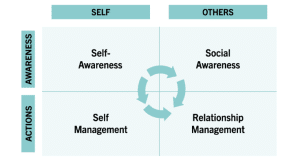 Contributed by Forest Stroud, Staff Geologist, PPM Consultants
Contributed by Forest Stroud, Staff Geologist, PPM Consultants
One Sunday I was at church and talking to a fellow congregate and he inquired what type work I do. His question was timely as I’ve been in the process of refining my “elevator speech” so people don’t glaze over when I ramble on about “groundwater sampling” or “benzene”! Given that was in process, I found myself firing back instinctively saying “Honestly, I deal with more people problems than I do technical problems.” He seemed taken aback and said “Really? I thought you just dealt with dirt.”
I’m a firm believer in there being two types of people in the world: Technical-people and People-people. Most people fall somewhere in the middle. A truly successful person (especially in the environmental consulting field) can find the balance between being extremely technical when needed and yet good with people when needed.
For instance, the technical skillset is a necessity when installing groundwater remediation systems, conducting groundwater and soil sampling, entering in analytical data, writing reports, dealing with lawyers, and a host of other duties that come with our business. Here’s a simple example of how the small technical details are very important in our day-to-day work. In order to get consistent data to best understand how groundwater is moving at a particular site, each well needs to be marked (on the north side), that mark is the point where the top of casing is measured when conducting the elevation survey, that is also where the tape should be read when measuring the groundwater depth in the well at each sampling event.
This can all seem very nitpicky, but these are the details that are necessary to provide the best solution for the client. Between the elevation data and the analytical data collected from a sampling event the project manager now has the best possible data to determine what remediation technique is the best and where on the site the remediation technique will be best applied.
Feeling overwhelmed and fatigued from that peek behind the curtain? That is a light technical description of what goes on at PPM every day. We need people that thrive in these technical situations to provide the best possible result.
 This leads me to the other side of the coin: the People-people. A great framework for starting to understand this concept is a book titled Emotional Intelligence 2.0 by Dr. Travis Bradbury and Dr. Jean Greaves. They claim that emotional quotient (EQ) is a better determinate of success than the intelligence quotient (IQ). EQ functions on four levels of awareness: self-awareness, self-management, social awareness, and relationship management (Figure 1). The concepts and ideas in these books are a large part of what goes into working with subcontractors, vendors or property owners on a job site in a way that best serves our clients.
This leads me to the other side of the coin: the People-people. A great framework for starting to understand this concept is a book titled Emotional Intelligence 2.0 by Dr. Travis Bradbury and Dr. Jean Greaves. They claim that emotional quotient (EQ) is a better determinate of success than the intelligence quotient (IQ). EQ functions on four levels of awareness: self-awareness, self-management, social awareness, and relationship management (Figure 1). The concepts and ideas in these books are a large part of what goes into working with subcontractors, vendors or property owners on a job site in a way that best serves our clients.
There’s a really interesting dynamic when working with subcontractors in the field because the work product needs to meet regulatory standards while also balancing the motivation of the crew, keeping the job within the allotted time frames, and, of course, under budget. In my time working with subcontractors, I’ve learned that it is important to 1) form a relationship with the crews, 2) know and learn where there strengths and weaknesses lie, and 3) ensure the crew all know that you’re on the same team.
Thankfully, we see a lot of the same faces in this industry, so we are familiar with most of the subcontractors, directing our procurements to those that are the best. However, all crews have different personalities and tendencies. After working with a specific crew a few times, you start to understand each crew’s strengths and weaknesses. A ”people-oriented” geologist, scientist or engineer will know where to watch and where to tactfully push back on how a subcontractor is doing something. The goal is to have as few of these push-back moments as possible. It is incredibly valuable to have a subcontractor who is in tune with the way the consultant and the state specify work to be done.
By fostering good relationships and making keen observations a good consultant can communicate project needs in a way that inspires the subcontractors to closely follow the detailed specifications that we have put out. That is also a two-way street. The subcontractors often have very specific hands on knowledge and ideas that are very valuable to the project. Its about team work, not posturing with regard to who is right. Knowing how to work with a subcontracted crew can really make the difference between enjoying your day at work and dreading it. Once you get comfortable with the people side of the job it can go a long way toward successfully serving our clients needs efficiently and economically. So… to answer the question at the top of the article: “No, I don’t just work with dirt!”

